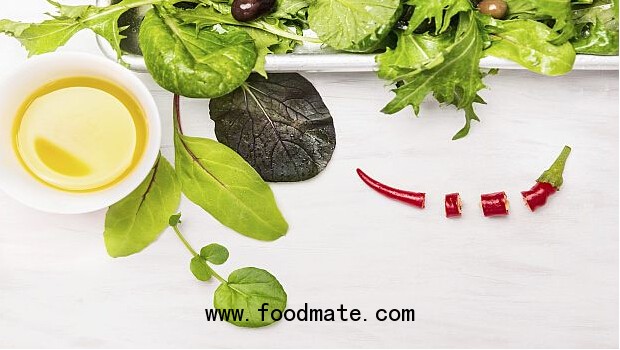
Classics such as Caesar, blue cheese and Italian were staples in U.S. households and restaurants, but it was Steve Henson’s creation of ranch dressing—specifically Hidden Valley Ranch Dressing—in the 1950s that began America’s love affair with dressing. But consumers are now opting for healthier, clean-label foods, which can be a challenge for dressing product developers.
Related articles: CLEAN-LABEL SOUPS & SAUCES
The digital issue, “Clean-Label Salad Dressings," explores the science behind creating dressings that deliver the stability and sensory appeal consumers are used to, but without using the very ingredient technologies that have enabled these attributes previously. Although most consumers consider dressing as the best part of their salad, food technologists consider it an elegant marvel of food science—and one whose very stability often depends on many of the same multisyllabic “chemicals" that don't fit on a clean label.
Data from Mintel found that even though sales of salad dressings have declined since 2005, U.S. sales of salad dressings reached $3.1 billion in 2012. According to their report, “Bagged Salad and Salad Dressings—U.S., July 2008," health-oriented consumers who eat large amounts of lettuce and salad greens are cutting back on dressings perceived as high in fat, calories and sodium. Consumers also are interested in fewer ingredients in their dressings.
Related articles:20% of U.S. Food, Beverage Launches Tout Clean Label
Data from the Specialty Food Association found more than six in 10 consumers report having healthy-eating goals; yet, relatively low percentages say healthful claims persuade them to buy. Salad dressing companies can boost appeal by touting flavor along with the added benefit of better-for-you claims such as all-natural, low/no sodium and low/no sugar.
The issue for clean-label dressing developers is that they face a double, even paradoxical goal: design a product that delivers the stability and sensory appeal consumers have grown to expect from the category, but do so without resorting to the very ingredient technologies that have allowed such stability and sensory appeal to happen.
Related articles: Clean Label Becomes the New Food Industry Standard
An impossible task? It doesn’t have to be. Armed with a clear understanding of salad-dressing science and a well-stocked R&D lab, product developers have all the tools they need to build a dressing so clean it’ll have nothing to hide—and will give clean-label consumers nothing to fear.
Of all the standards consumers apply to dressings, the pivotal factor lies within texture. And there are many aspects of texture a dressing developer must consider, including emulsion stabilization, viscosity, particle suspension, mouthfeel, improved flow characteristics and rheology. A dressing developer must match the texture they create in the bottle with the texture that exists in consumers’ imaginations. If the texture isn’t up to par, it could impede on the consumers judgement of how the product tastes.
Related articles: Clean Label is Here to Stay
Joshua Brooks, vice president, Gum Technology, noted there’s a slippery interplay between texture and taste that affects consumers’ responses to both. “Flavor and taste are often confused with texture," he said. “We hear individuals indicating that something doesn’t ‘taste good’ when they’re actually experiencing a product that has poor or unexpected texture."
The operational processes the dressing sees during production will be delicate as well. The processing dressings endure is harsh. No matter which processing procedure, “Ingredients need to have a high level of process tolerance to deliver a product that has an acceptable consumer texture," said Agnes Lapinska, marketing manager, savory, at Ingredion. “Process tolerance equals stability in the final product."
Related articles: Clean Label Trend Translating Into Sports Nutrition
Stabilizers tolerant to the high shear required for emulsification are particularly essential. Several companies have developed ways to make texturizers easier to work with in order to produce stable, appealing, clean-label dressings.


